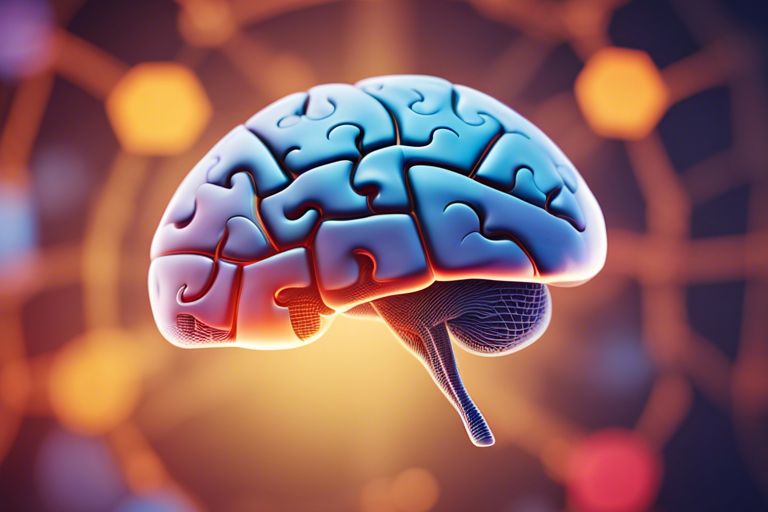Autism, a complex neurodevelopmental condition, continues to puzzle researchers with its unique impact on the brain. Understanding how autism affects the brain is crucial in providing effective support and interventions for individuals with autism spectrum disorder. Characterised by difficulties in social interaction, communication challenges, and repetitive behaviours, autism presents a spectrum of symptoms and severity levels, making each experience unique. Unravelling the mysteries of how autism alters brain function can shed light on the challenges individuals face, as well as highlighting potential strengths such as heightened attention to detail and exceptional memory capabilities. Join us as we probe into the intricate workings of the autistic brain to gain a deeper appreciation of this enigmatic condition.
Key Takeaways:
- Autism affects brain connectivity: Individuals with autism often have atypical connectivity between different brain regions, which can impact how information is processed and integrated.
- Hyper- or hypo-connectivity in specific areas: Some studies suggest that certain areas of the brain in autistic individuals may be overconnected (hyper-connected) or underconnected (hypo-connected) compared to neurotypical individuals.
- Different sensory experiences: Autistic individuals may have unique sensory processing differences, such as heightened sensitivity to light, sound, or touch, which can influence how they perceive and interact with their environment.
The Autistic Brain: Structure and Function
Understanding the intricacies of the autistic brain is essential in unravelling the complexities of autism spectrum disorder (ASD). Researchers have explored into the How Big Data Are Unlocking the Mysteries of Autism to shed light on the structural and functional disparities that exist.
Neuroanatomy Variances in ASD
Studies have indicated that individuals with ASD exhibit variances in brain structure compared to neurotypical individuals. These variances involve differences in the size, shape, and organisation of various brain regions, particularly in areas responsible for social interaction, communication, and sensory processing.
Some regions such as the amygdala and the prefrontal cortex show abnormalities in volume and connectivity in individuals with ASD. These structural differences may contribute to challenges in emotional regulation, social cognition, and sensory integration observed in those with autism.
Functional Differences in Neural Connectivity
Alongside structural variances, research has also identified functional differences in neural connectivity in individuals with ASD. Functional MRI studies have revealed alterations in how different brain regions communicate and synchronise, affecting information processing and integration within the brain.
Moreover, these functional disparities can impact cognitive functions such as attention, memory, and decision-making, highlighting the intricate relationship between brain structure and function in individuals with autism spectrum disorder.

Developmental Trajectories
Understanding the developmental trajectories of individuals with Autism Spectrum Disorder (ASD) is crucial in unraveling the mysteries of how autism affects the brain. By delving into early brain development in ASD and the role of neuroplasticity, we can gain valuable insights into the unique patterns of neural growth and connectivity in individuals with ASD.
Early Brain Development in ASD
Research suggests that in early brain development in ASD, there may be differences in how neural circuits are formed and connected compared to neurotypical individuals. These differences can impact various cognitive functions, sensory processing, and social communication skills. Understanding these early developmental differences is crucial for providing appropriate interventions and support for individuals with ASD.
In individuals with ASD, early brain development may show atypical patterns of growth and connectivity, leading to challenges in areas such as language development, social interaction, and emotional regulation. These differences in brain development can manifest in a range of symptoms and behaviours that are characteristic of autism.
The Role of Neuroplasticity
Neuroplasticity plays a significant role in shaping the developmental trajectories of individuals with ASD. Neuroplasticity refers to the brain’s ability to reorganise itself by forming new neural connections in response to learning and experiences. In the context of ASD, understanding how neuroplasticity operates can provide insights into the potential for interventions and therapies to enhance neural connectivity and improve behavioural outcomes.

Sensory Processing and Perception in Autism
Understanding sensory processing and perception in individuals with autism is crucial for gaining insights into the unique ways in which their brains function. Autism can significantly impact the processing of sensory information, leading to differences in how individuals perceive and respond to the world around them.
Moreover, perceptual experiences in autism can vary greatly from neurotypical individuals, shaping how individuals interact with their environment and process information. By delving into the intricate workings of sensory processing and perception in autism, we can better appreciate the diverse sensory experiences of individuals on the autism spectrum.
Sensory Sensitivities and the Brain
Sensory sensitivities in autism can be attributed to atypical processing of sensory information in the brain. Individuals with autism may experience heightened sensitivity to sensory stimuli, such as light, sound, touch, or smell. These sensitivities can lead to overwhelming sensory experiences that may trigger anxiety, discomfort, or even meltdowns in some individuals.
Research suggests that sensory sensitivities in autism stem from differences in neural connectivity and processing. These differences can result in altered responses to sensory input, impacting how individuals perceive and make sense of the world around them. Understanding the neural basis of sensory sensitivities is essential for developing effective strategies to support individuals with autism in managing their sensory experiences.
Perceptual Differences and their Cognitive Impacts
Perceptual differences in individuals with autism can have profound cognitive impacts on how they interpret and understand the environment. These differences can affect social interactions, communication, and overall cognitive processing. Individuals with autism may exhibit enhanced perceptual abilities in certain domains, such as pattern recognition or attention to detail, while also experiencing challenges in areas like social perception or sensory integration.
Communication and Social Interaction
Understanding how autism affects communication and social interaction is crucial in unlocking the mysteries of this complex condition. Individuals with autism often face challenges in effectively expressing themselves and engaging in social interactions, which can impact their daily lives and relationships.
Brain Regions Associated with Language and Social Cognition
Research has identified specific brain regions that play a critical role in language processing and social cognition. The prefrontal cortex and temporal lobes are particularly important in understanding and producing language, while regions such as the amygdala and mirror neuron system are essential for social cognition and empathy.
Abnormalities in these brain regions have been observed in individuals with autism, which may contribute to their difficulties in communication and social interactions. Understanding how these areas function differently in autistic individuals can provide valuable insights into the challenges they face.
Neural Mechanisms Underpinning Social Communication Deficits
The neural mechanisms underlying social communication deficits in autism involve complex interactions between various brain networks. Differences in functional connectivity within the default mode network, as well as aberrant activation patterns in the social brain network, are thought to contribute to difficulties in understanding others’ emotions and intentions.
Individuals with autism may struggle with theory of mind tasks, where they have to infer someone else’s thoughts or beliefs, due to atypical processing in the brain regions responsible for this cognitive ability. These challenges in social communication can impact relationships and social interactions.
Further research is needed to probe deeper into the specific neurobiological mechanisms that underlie social communication deficits in autism. By gaining a better understanding of how the brain processes social information differently in individuals with autism, we can develop more targeted interventions to improve their communication skills and social interactions.

Unlocking the Mysteries – How Autism Affects the Brain
Conclusively, understanding how autism affects the brain is crucial in providing better support and interventions for individuals on the autism spectrum. Through exploring the complexities of neural connectivity, neural activity, and brain structure, we can gain valuable insights into the unique cognitive processes of individuals with autism. By continuing to unlock these mysteries, we can ultimately enhance our efforts in promoting the well-being and quality of life for those affected by autism. Research in this field remains vital in developing targeted therapies and interventions, ensuring that individuals with autism can thrive and reach their full potential.
FAQ
Q: What is autism and how does it affect the brain?
A: Autism is a neurodevelopmental disorder that affects the brain’s normal development, leading to challenges in social interaction, communication, and repetitive behaviours.
Q: What are the common signs and symptoms of autism affecting the brain?
A: Common signs and symptoms of autism affecting the brain include difficulties in social interactions, communication, sensory sensitivities, repetitive behaviours, and limited interests.
Q: How does autism impact the cognitive functions of the brain?
A: Autism can impact cognitive functions such as attention, memory, executive functioning, and processing speed, leading to challenges in learning and everyday tasks.
Q: Is there a specific part of the brain affected by autism?
A: While autism affects multiple areas of the brain, research suggests that areas responsible for social cognition, emotional processing, and sensory perception show differences in individuals with autism.
Q: How do genetic and environmental factors contribute to autism’s effect on the brain?
A: Genetic factors play a significant role in autism, but environmental influences such as prenatal factors, exposure to toxins, and early childhood experiences also contribute to how autism affects the brain.
Q: Can therapy and interventions help in improving brain functions in individuals with autism?
A: Yes, therapy and interventions such as behavioural therapies, speech therapy, occupational therapy, and educational interventions can help improve brain functions and enhance skills in individuals with autism.
Q: What are some ongoing research areas exploring how autism affects the brain?
A: Ongoing research areas include investigating neural connectivity differences, brain structure abnormalities, neurotransmitter imbalances, and the role of neuroinflammation in understanding how autism affects the brain.







